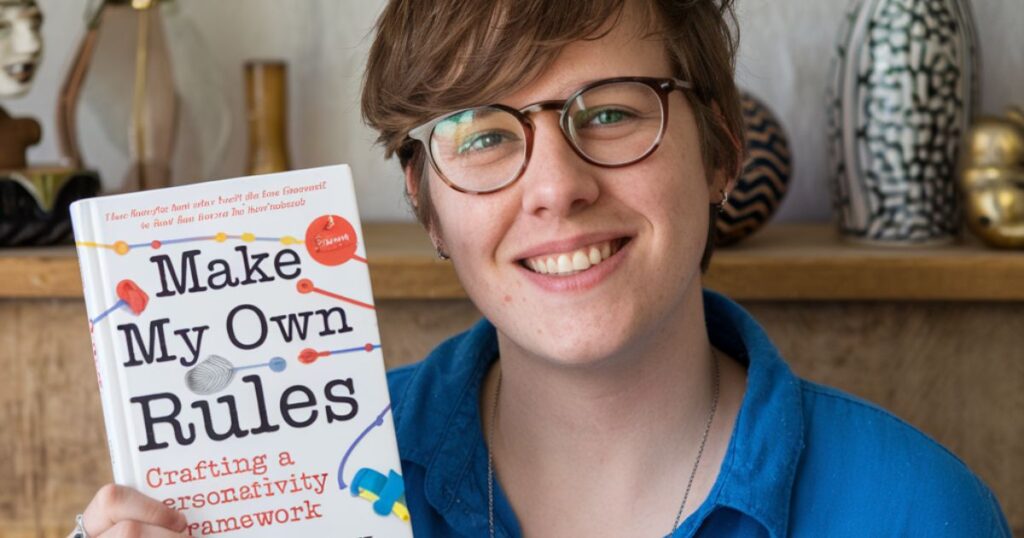Have you ever found yourself stuck in a creative rut, desperately searching for a fresh perspective? You’re not alone. In today’s fast-paced world, the ability to think outside the box is more crucial than ever. But let’s face it – that phrase has been used so much that it’s practically become a cliché. So why not shake things up a bit? Let’s dive into 15 innovative ways to express this timeless concept, each offering a unique twist on creative thinking. 15 Ways to Say “Think Outside the Box”.
Think Creatively: Igniting the Spark of Innovation

Thinking creatively is the heart and soul of innovation. It’s about seeing the world through a different lens, challenging assumptions, and daring to dream big. But how do we cultivate this mindset?
Consider the story of James Dyson, who revolutionized vacuum technology. He didn’t just improve existing designs; he completely reimagined how a vacuum could work. After 5,126 failed prototypes, Dyson finally created the world’s first bagless vacuum cleaner. His persistence and creative thinking paid off, transforming an entire industry. 15 Ways to Say “Think Outside the Box”.
To foster creative thinking in your daily life, try these techniques:
- Practice mindfulness to clear mental clutter
- Engage in diverse experiences to broaden your perspective
- Keep a curiosity journal to record questions and observations
- Regularly challenge your assumptions
“Creativity is intelligence having fun.” – Albert Einstein
Go Off the Beaten Track: Charting Your Course
Going off the beaten track means venturing into uncharted territory, both literally and figuratively. It’s about forging your path rather than following the crowd. This approach has led to some of the most significant breakthroughs in history.
Take the Wright brothers, for instance. While others were trying to create flying machines with powerful engines, Wilbur and Orville focused on mastering control. This unconventional approach led to the first successful powered, sustained, and controlled airplane flight.
To apply this mindset to problem-solving:
- Question established methods
- Seek inspiration from unrelated fields
- Embrace calculated risks
- Learn from failures and unexpected outcomes
Come Up with Original Ideas: The Art of Ideation
Generating truly original ideas is a skill that can be developed with practice. It’s not about waiting for a eureka moment, but rather about creating an environment where innovative thoughts can flourish.
Case Study: Airbnb
Airbnb’s founders didn’t just create another hotel booking site. They asked, “What if people could rent out their spare rooms?” This simple yet original idea disrupted the entire hospitality industry.
Try these ideation techniques:
- SCAMPER: Substitute, Combine, Adapt, Modify, Put to another use, Eliminate, Reverse
- Random Word Association: Combine unrelated concepts to spark new ideas
- Reverse Thinking: Start with the opposite of what you want to achieve
Break the Status Quo: Challenging Established Norms
Breaking the status quo means questioning why things are done a certain way and daring to suggest alternatives. It’s about refusing to accept “that’s how it’s always been done” as a valid reason.
Consider how Netflix challenged the status quo of video rentals. Instead of late fees and physical stores, they introduced a subscription model and streaming service, completely transforming how we consume media.
To challenge the status quo in your field:
- Regularly audit existing processes
- Encourage and reward innovative thinking
- Create safe spaces for experimentation
- Learn from industries different from your own
Be Unconventional: Embracing Your Unique Perspective
Being unconventional means leveraging your unique experiences, skills, and viewpoints to approach problems in ways others might not consider. It’s about embracing what makes you different and using it to your advantage.
Take Elon Musk, for example. His unconventional approach to electric cars, space travel, and sustainable energy has pushed entire industries forward. He’s not afraid to propose and pursue ideas that others might dismiss as impossible.
To cultivate and express your unconventional ideas:
- Embrace your quirks and unique experiences
- Cross-pollinate ideas from different domains
- Don’t be afraid to propose “crazy” ideas
- Surround yourself with diverse thinkers
Throw Out the Rule Book: Redefining Boundaries
Sometimes, to truly innovate, you need to throw out the rule book entirely. This doesn’t mean being reckless, but rather critically examining which rules are truly necessary and which are holding you back.
Uber’s founders threw out the rule book for taxi services. They asked, “What if anyone could be a taxi driver?” This simple question led to a revolution in transportation services worldwide.
Guidelines for thoughtful rule-breaking:
| Step | Action | Purpose |
|---|---|---|
| 1 | Identify the rules | Understand what constraints you’re working within |
| 2 | Question each rule | Ask why it exists and what purpose it serves |
| 3 | Imagine alternatives | What would happen if this rule didn’t exist? |
| 4 | Test carefully | Start small and measure the impact of rule-breaking |
| 5 | Iterate and improve | Learn from each experiment and refine your approach |
Make My Own Rules: Crafting a Personal Creativity Framework

Making your own rules is about creating a personalized framework for creativity and problem-solving. It’s recognizing that what works for others might not work for you, and vice versa.
Steve Jobs famously made his own rules in product design, focusing on simplicity and user experience above all else. This approach led to revolutionary products like the iPhone and iPad.
Steps to develop your creative framework:
- Reflect on past successes and failures
- Identify your unique strengths and perspectives
- Experiment with different creative techniques
- Refine and document your creative process
- Regularly review and update your framework
Defy Convention: The Rebel’s Guide to Innovation
Defying convention means challenging the status quo and pushing boundaries. It’s about asking “Why not?” instead of accepting “That’s just how it’s done.”
Consider how Airbnb defied the convention of traditional hospitality. They turned the idea of strangers staying in your home from something unthinkable to a global phenomenon.
Techniques for identifying and challenging conventions:
- Regularly question industry “best practices”
- Look for pain points in current processes
- Seek inspiration from unrelated fields
- Encourage and reward “crazy” ideas
See the Bigger Picture: Expanding Your Perspective
Seeing the bigger picture involves stepping back and considering the broader context of a problem or situation. It’s about understanding how different elements interconnect and influence each other.
Tesla’s approach to electric vehicles is a great example. Instead of just focusing on building cars, they considered the entire ecosystem – from charging infrastructure to energy storage solutions.
Exercises to practice seeing the bigger picture:
- Mind mapping: Visually connect related ideas and concepts
- Systems thinking: Analyze how different parts of a system interact
- Future scenario planning: Imagine potential long-term outcomes
- Interdisciplinary learning: Study fields outside your expertise
Break New Ground: Pioneering Fresh Approaches
Breaking new ground means venturing into uncharted territory, whether in thought or action. It’s about being a trailblazer and daring to go where others haven’t.
SpaceX broke new ground by making reusable rockets a reality, dramatically reducing the cost of space travel. This pioneering approach has opened up new possibilities for space exploration and commerce.
Strategies for identifying unexplored territories:
- Look for neglected areas in your field
- Combine concepts from different disciplines
- Challenge fundamental assumptions
- Explore emerging technologies and their potential applications
Go Against Conventions: The Power of Contrarian Thinking
Going against conventions involves questioning widely held beliefs and exploring alternative viewpoints. It’s about daring to disagree and proposing unconventional solutions.
Amazon’s Jeff Bezos went against conventions by prioritizing long-term growth over short-term profits. This contrarian approach allowed Amazon to become the e-commerce giant it is today.
Techniques for developing contrarian ideas:
- Play devil’s advocate with popular ideas
- Seek out and seriously consider minority opinions
- Imagine how a competitor might disrupt your industry
- Regularly challenge your own deeply held beliefs
Try It from Another Angle: Reframing Problems for Fresh Solutions
Reframing problems involves looking at challenges from different perspectives to uncover new solutions. It’s about changing the question to change the answer.
IKEA reframed the problem of furniture retail. Instead of asking “How can we sell more furniture?”, they asked, “How can we make stylish furniture affordable for everyone?” This led to their innovative flat-pack, self-assembly model.
Exercises to practice reframing:
- Change the scale (e.g., what if this problem was 10 times bigger/smaller?)
- Reverse the problem (e.g., how could we make this worse?)
- Change the beneficiary (e.g., who else could benefit from solving this?)
- Alter the timeframe (e.g., how would we solve this if we had unlimited time/only 24 hours?)
What Else Do You Think?: Encouraging Diverse Viewpoints
Encouraging diverse viewpoints means actively seeking out and valuing different perspectives. It’s about recognizing that the best solutions often come from a blend of diverse ideas.
Google’s “20% time” policy, which allowed employees to spend 20% of their time on side projects, led to innovations like Gmail and Google News. By encouraging diverse thinking, they tapped into their employees’ creativity.
Strategies for fostering diverse thinking:
- Create psychological safety for sharing unconventional ideas
- Actively seek out dissenting opinions
- Use anonymous brainstorming techniques to reduce bias
- Bring in outsiders for fresh perspectives
Figure It Out: Embracing the Challenge of Creative Problem-Solving
“Figure it out” embodies a mindset of resourcefulness and determination. It’s about approaching challenges with confidence and creativity, even when the path forward isn’t clear.
The Apollo 13 mission is a prime example of this mindset in action. When a critical malfunction occurred, NASA engineers had to “figure out” how to bring the astronauts home safely using only the materials available on the spacecraft.
Strategies for approaching seemingly insurmountable challenges:
- Break the problem down into smaller, manageable parts
- Focus on what you can control
- Embrace constraints as catalysts for creativity
- Cultivate a growth mindset that sees challenges as opportunities
Push the Envelope: Expanding the Boundaries of Possibility
Pushing the envelope means testing limits and extending boundaries. It’s about constantly asking, “What’s next?” and “How can we go further?”
Elon Musk’s companies consistently push the envelope. Tesla pushes the boundaries of electric vehicle technology, SpaceX pushes the limits of space travel, and Neuralink pushes the frontiers of brain-computer interfaces.
How to identify and push against your own perceived limitations:
- Set ambitious, seemingly impossible goals
- Regularly challenge your assumptions about what’s possible
- Study breakthroughs in other fields for inspiration
- Embrace failure as a necessary part of pushing boundaries
Conclusion: Embracing Your Unique Brand of Creativity
As we’ve explored these 15 ways to express “think outside the box,” remember that true creativity isn’t about following a formula. It’s about finding your unique approach to problem-solving and innovation. Mix and match these strategies, experiment with different techniques, and don’t be afraid to create your own.
FAQs
What is another way to say “thinking outside the box”?
Beyond the 15 ways we’ve discussed, you might also say:
- “Take a fresh perspective”
- “Challenge the norm”
- “Reimagine the possibilities”
- “Explore uncharted territory”
What are ways to think outside the box?
Some practical techniques include:
- Practice mindfulness to clear mental clutter
- Engage in diverse experiences
- Use ideation techniques like SCAMPER or random word association
- Seek out diverse perspectives
- Challenge your assumptions regularly
What is it called when you think outside the box?
Thinking outside the box is often referred to as:
- Lateral thinking
- Divergent thinking
- Creative problem-solving
- Innovative thinking
These terms all describe the process of approaching problems from new and unexpected angles.
What is the word think outside of the box?
The phrase “think outside the box” is believed to have originated from the nine-dot puzzle, where the solution requires drawing lines beyond the implied square boundary. In different cultures and languages, similar concepts exist:
- In French: “Sortir des sentiers battus” (Leave the beaten path)
- In German: “Quer denken” (Think diagonally/laterally)
- In Japanese: “枠にとらわれない思考” (Thinking unbound by frames)











